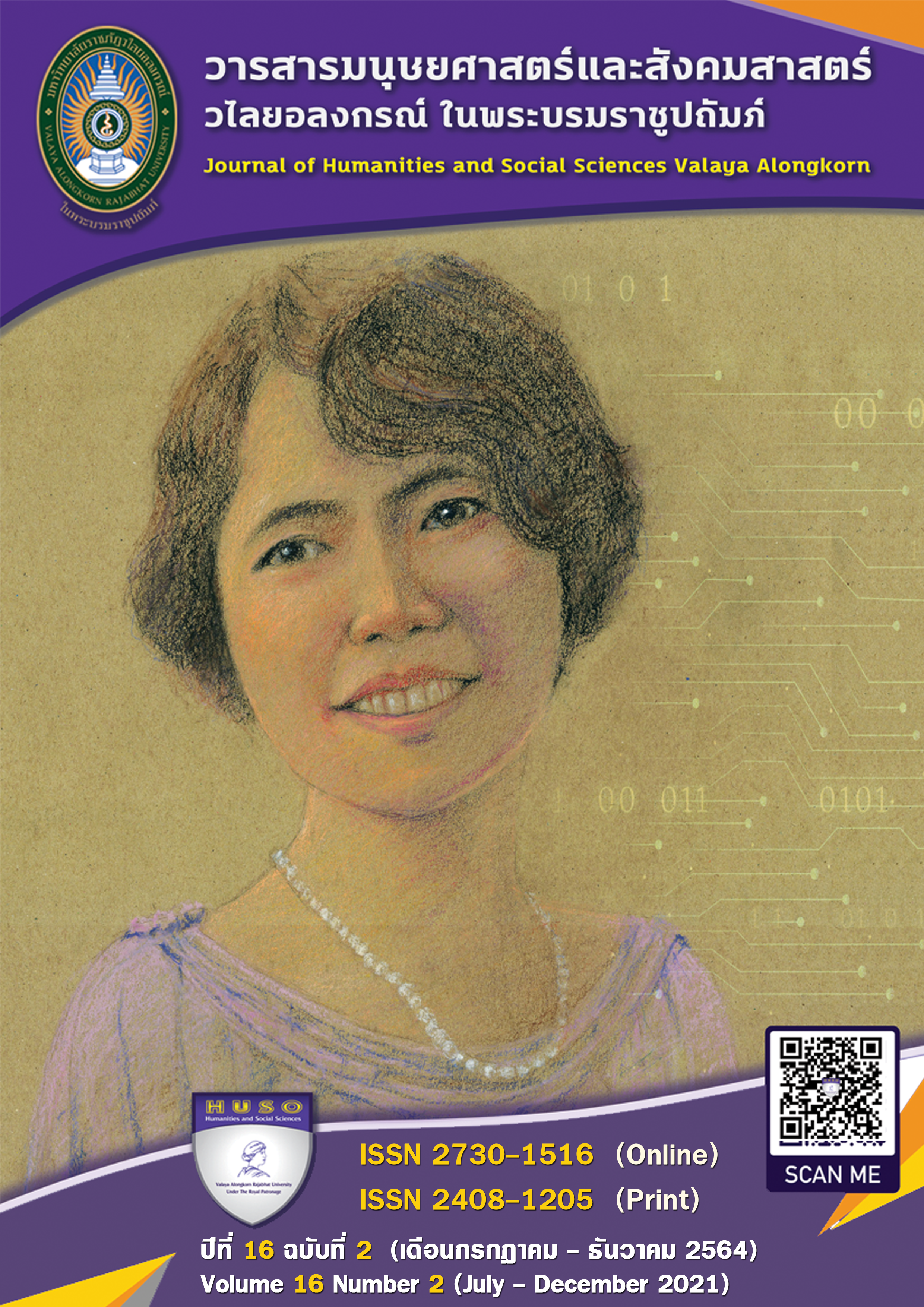การพัฒนากลุ่มอาชีพแบบมีส่วนร่วมสู่กลุ่มวิสาหกิจชุมชนตำบลบ้านแก้ง อำเภอเมืองสระแก้ว จังหวัดสระแก้ว
Main Article Content
บทคัดย่อ
งานวิจัยนี้มีวัตถุประสงค์เพื่อค้นหากิจกรรมสร้างการมีส่วนร่วม แนวทางการพัฒนากลุ่มอาชีพสู่วิสาหกิจชุมชน และเพื่อศึกษาผลของการดำเนินกิจกรรมสร้างการมีส่วนร่วมและการพัฒนากลุ่มอาชีพสู่วิสาหกิจ ชุมชน ตำบลบ้านแก้ง อำเภอเมืองสระแก้ว จังหวัดสระแก้ว ด้วยการวิจัยเชิงปฏิบัติการแบบมีส่วนร่วม โดยการเก็บรวบรวมข้อมูลที่เกี่ยวข้องกับการพัฒนากลุ่มอาชีพสู่วิสาหกิจชุมชน โดยวิธีการทำแผนที่เดินดิน การทำปฏิทินการผลิตของชุมชน การวิเคราะห์รายรับรายจ่ายของกลุ่มอาชีพด้วยเครื่องมือโอ่งชีวิตการสัมภาษณ์เชิงลึก ผู้ให้ข้อมูลที่สำคัญ จำนวน 15 คน และการศึกษาด้วยวิธีการสนทนากลุ่มเล็ก ผลการดำเนินงาน พบว่า 1) กิจกรรมในการสร้างการมีส่วนร่วมเพื่อพัฒนากลุ่มอาชีพสู่วิสาหกิจชุมชน คือ (1) การประชุมเชิงปฏิบัติการแบบมีส่วนร่วม (2) การวิเคราะห์ชุมชนแบบมีส่วนร่วม (Participatory Action Research: PRA) ประกอบด้วยการวาดแผนที่รอบนอกและแผนที่รอบใน การวิเคราะห์กลุ่มอาชีพด้วยเทคนิคโอ่งชีวิตเพื่อวิเคราะห์รายรับ รายจ่ายของกลุ่มอาชีพ (3) การประชุมเชิงปฏิบัติการเพื่อพัฒนาแนวทางการพัฒนากลุ่มอาชีพสู่วิสาหกิจชุมชน สำหรับแนวทางการพัฒนากลุ่มอาชีพสู่วิสาหกิจชุมชน คือ (1) การแบ่งหน้าที่และบทบาทและวางแผนการดำเนินงานพัฒนาศักยภาพกลุ่มอาชีพ (2) การพัฒนาผู้นำการเปลี่ยนแปลง (3) การเพิ่มช่องทางการจำหน่ายผลิตภัณฑ์ชุมชนและ (4) การขอรับรองการเป็นวิสาหกิจชุมชนระดับตำบล สำหรับผลของการดำเนินกิจกรรมสร้างการมีส่วนร่วมและการพัฒนากลุ่มอาชีพสู่วิสาหกิจชุมชน พบว่าผู้นำชุมชนและผู้แทนกลุ่มอาชีพที่เข้าร่วมกิจกรรมเกิดความตระหนักในประเด็นความสำคัญของการรวมกลุ่มเป็นวิสาหกิจชุมชนในระดับตำบล เกิดการพัฒนาศักยภาพกลุ่มอาชีพได้แก่ การพัฒนาผู้นำกาiเปลี่ยนแปลง โดยสร้างคณะทำงานขับเคลื่อนโครงการระดับพื้นที่ (ผู้ก่อการดี) จำนวน 10 คน และการพัฒนาตลาดออนไลน์ (กลุ่มอาชีพหน่อไม้ดอง) ซึ่งสามารถเพิ่มยอดจำหน่ายเป็น 5,800 บาท ต่อเดือนจากปกติขายได้เดือนละ 2,245บาท และได้รับการจดทะเบียนรับรองเป็นวิสาหกิจุชมชนในระดับตำบล ในชื่อวิสาหกิจชุมชนท่องเที่ยวช็อปกินนอน บวร ออนทัวร์ ตำบลบ้านแก้ง อำเภอเมืองสระแก้ว จังหวัดสระแก้ว
Article Details

อนุญาตภายใต้เงื่อนไข Creative Commons Attribution-NonCommercial-NoDerivatives 4.0 International License.
ลิขสิทธิ์บทความวิจัยที่ได้รับการตีพิมพ์เผยแพร่ในวารสารมนุษยศาสตร์และสังคมศาสตร์ วไลยอลงกรณ์ ในพระบรมราชูปถัมภ์ ถือเป็นกรรมสิทธิ์ของคณะมนุษยศาสตร์และสังคมศาสตร์ มหาวิทยาลัยราชภัฏวไลยอลงกรณ์ ในพระบรมราชูปถัมภ์ ห้ามนำข้อความทั้งหมดหรือบางส่วนไปพิมพ์ซ้ำ เว้นแต่จะได้รับอนุญาตจากมหาวิทยาลัยเป็นลายลักษณ์อักษร
ความรับผิดชอบ เนื้อหาต้นฉบับที่ปรากฏในวารสารมนุษยศาสตร์และสังคมศาสตร์ วไลยอลงกรณ์ ในพระบรมราชูปถัมภ์ เป็นความรับผิดชอบของผู้นิพนธ์บทความหรือผู้เขียนเอง ทั้งนี้ไม่รวมความผิดพลาดอันเกิดจากเทคนิคการพิมพ์
เอกสารอ้างอิง
กาญจนา ทองทั่ว. (2552). ลีลาวิจัยไทบ้าน. เชียงใหม่: วนิดาการพิมพ์.
จุฑาทิพย์ ภัทรวาท. (2553). การวิจัยเชิงปฏิบัติการแบบมีส่วนร่วม. กรุงเทพฯ: มหาวิทยาลัยธุรกิจบัณฑิต.
สิทธิณัฐ ประพุทธนิมิต. (2546). การวิจัยเชิงปฏิบัติการแบบมีส่วนร่วม: แนวคิดและแนวปฏิบัติ. เชียงใหม่: วนิดา เพรส.
สุนทร คุณชัยมัง. (2554). การทำงานรวมกลุ่มเพื่อสร้างผลลัพธ์ร่วมกัน. กรุงเทพฯ: บริษัทอิมเมสพลัส คอมมิวนูเคชั่น จำกัด.
อรทัย ก๊กผล. (2552). คู่คิด คู่มือ การมีส่วนร่วมของประชาชนสำหรับผู้บริหารท้องถิ่น. กรุงเทพฯ: เจริญการพิมพ์.
Kokpol O. (2009). The Public Participation Handbook for Local Administrators. Bangkok: Charoen Karnpim Press. [in Thai]
Koonchaimang S. (2011). Collective Impact. Bangkok: Image Plus Communication Co.,Ltd. [in Thai]
Patrawart J. (2010). Participatory Action Research. Bangkok: Dhurakij Pundit University.[in Thai]
Prabudhanitisarn S. (2003). Participatory Action Research Concepts and Practice. Chiang Mai: Wanida Press. [in Thai]
Thongtua K. (2009). Tai Ban Research Style. Chiang Mai: Wanida Press. [in Thai]

